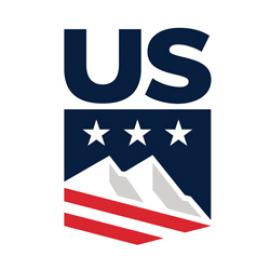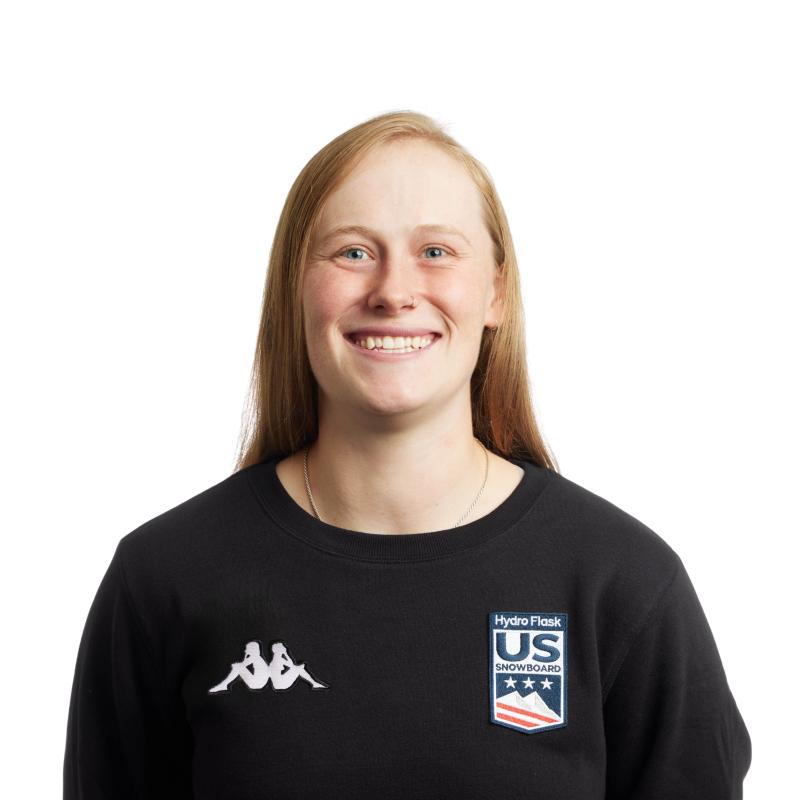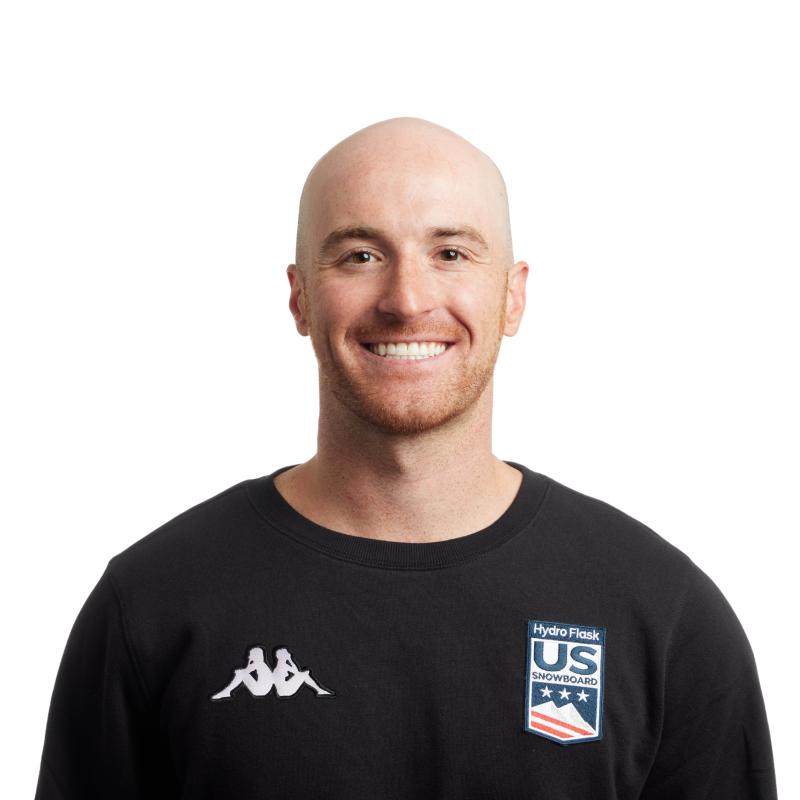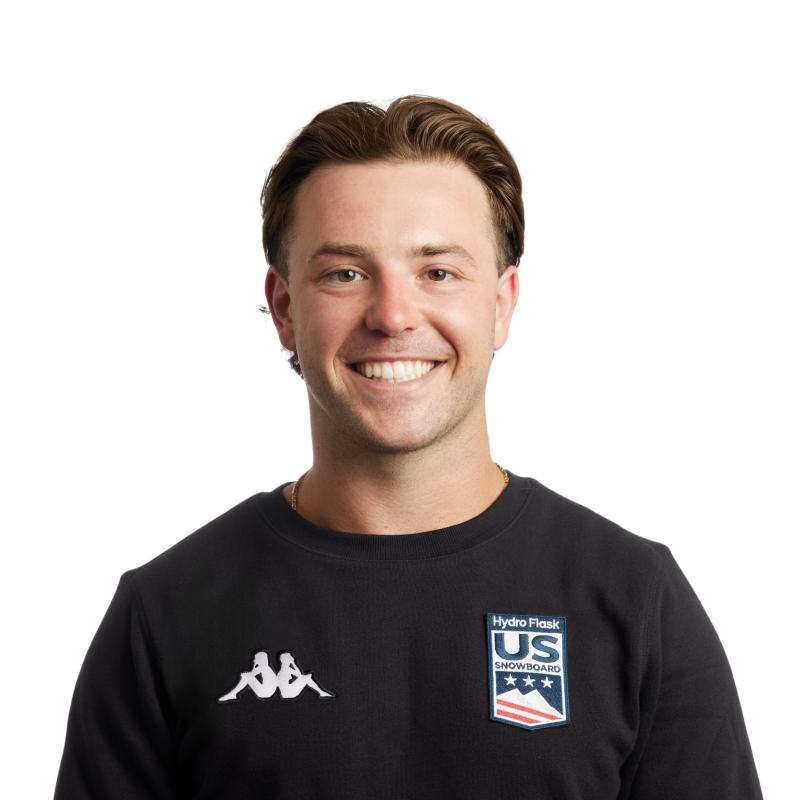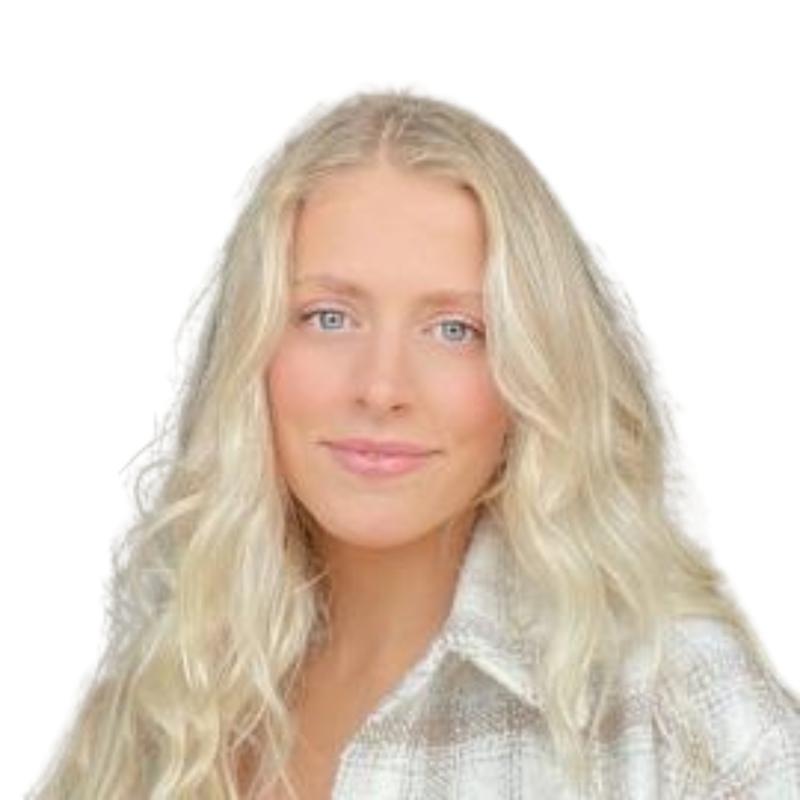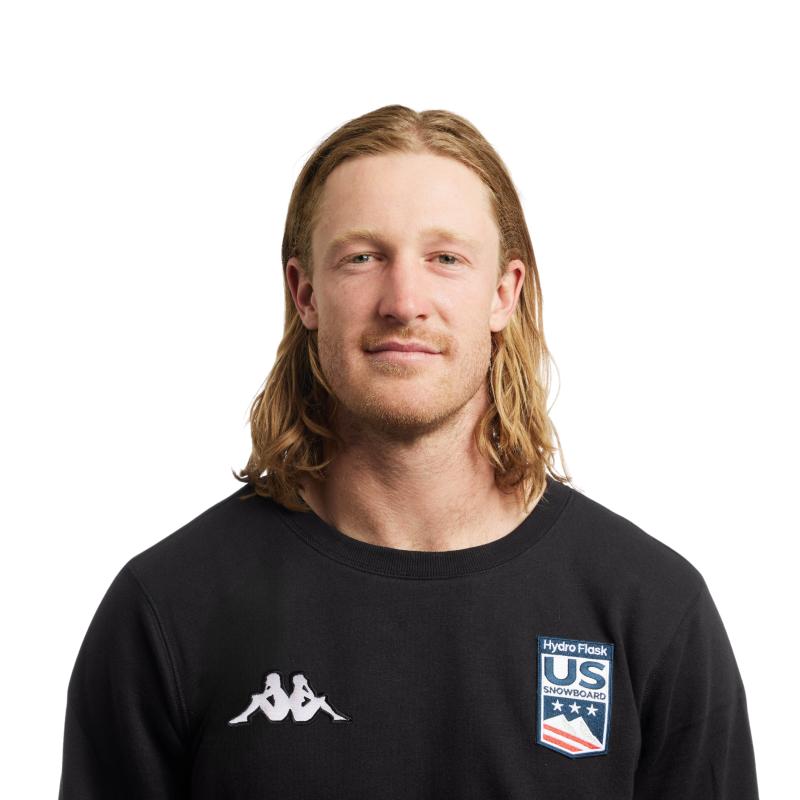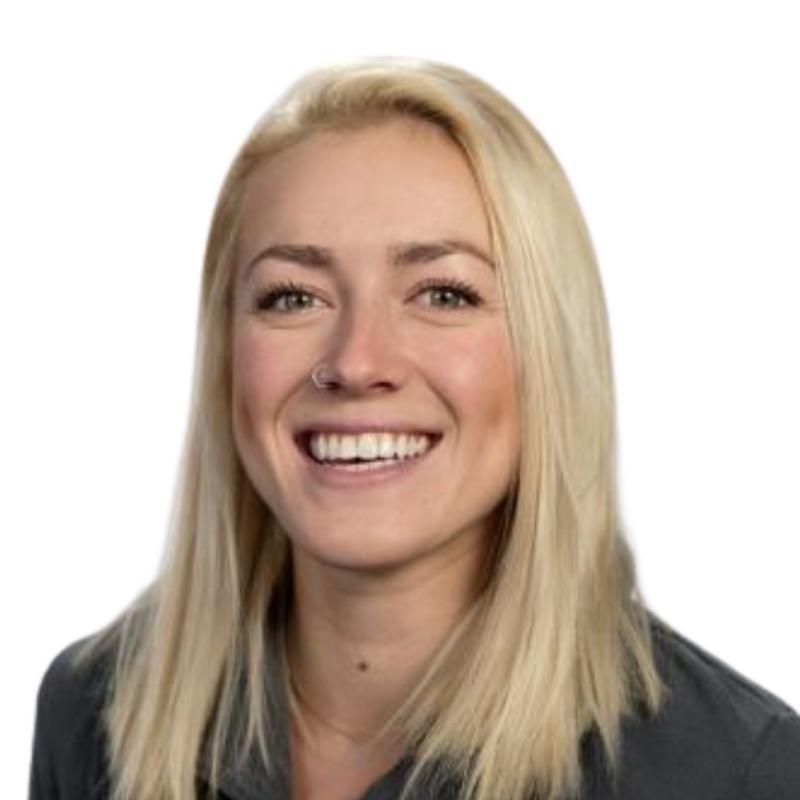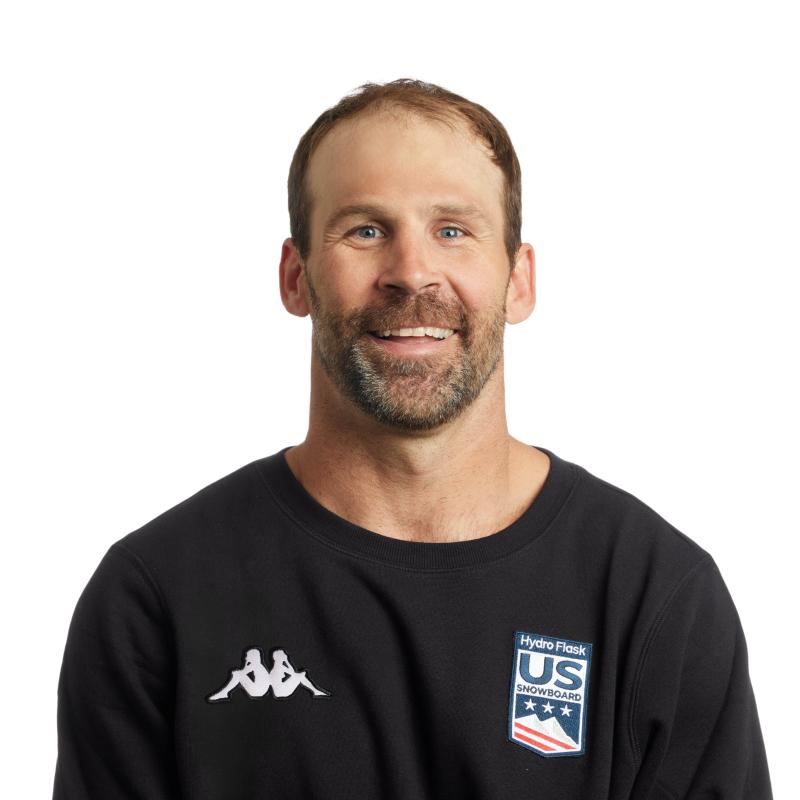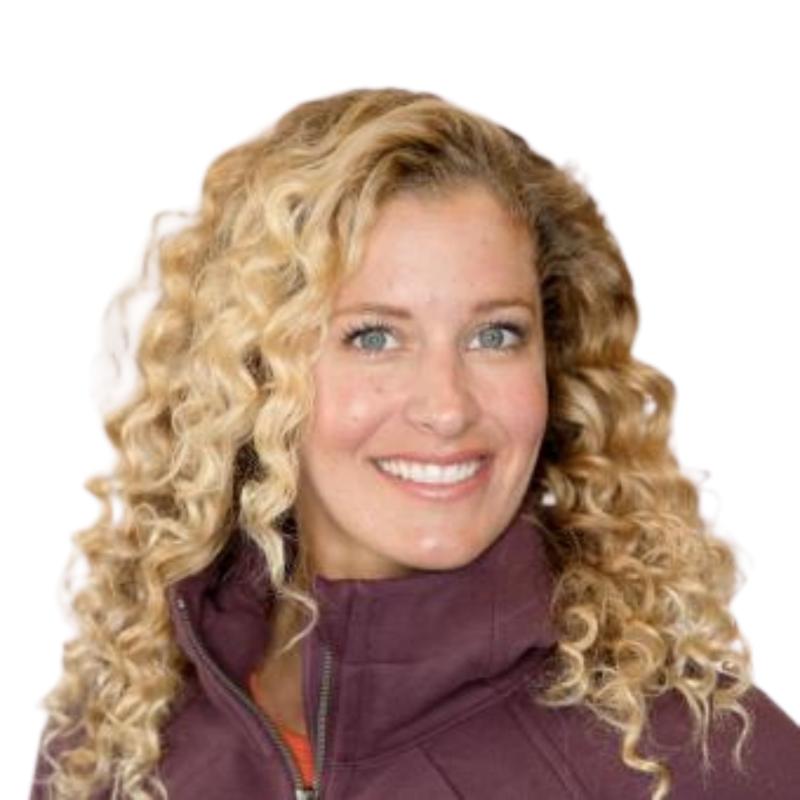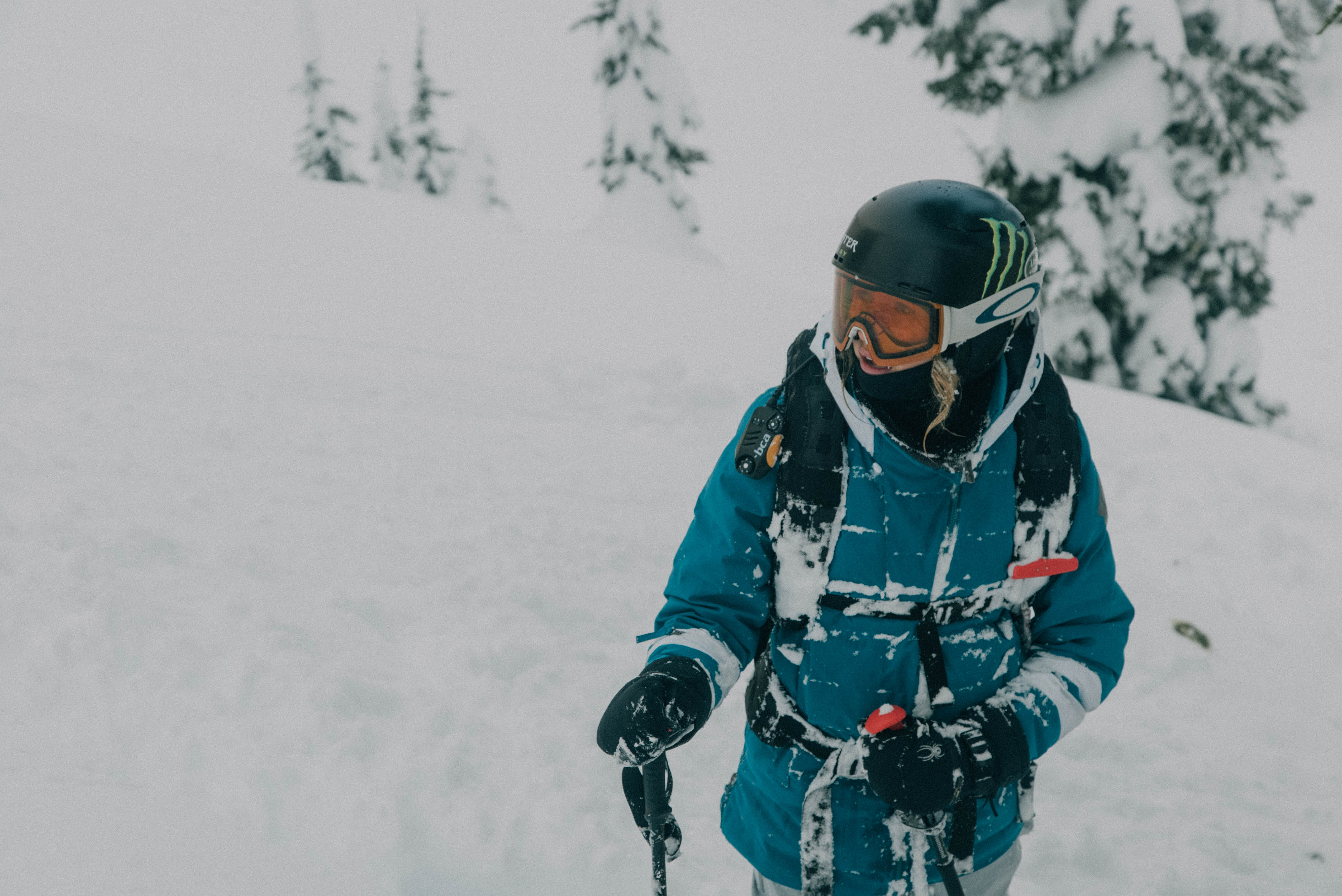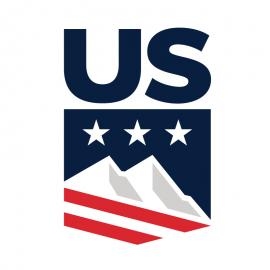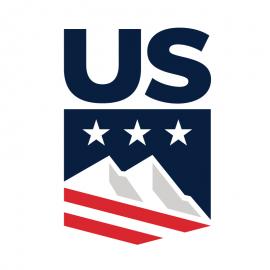Rad Camp Goes Off in Austria
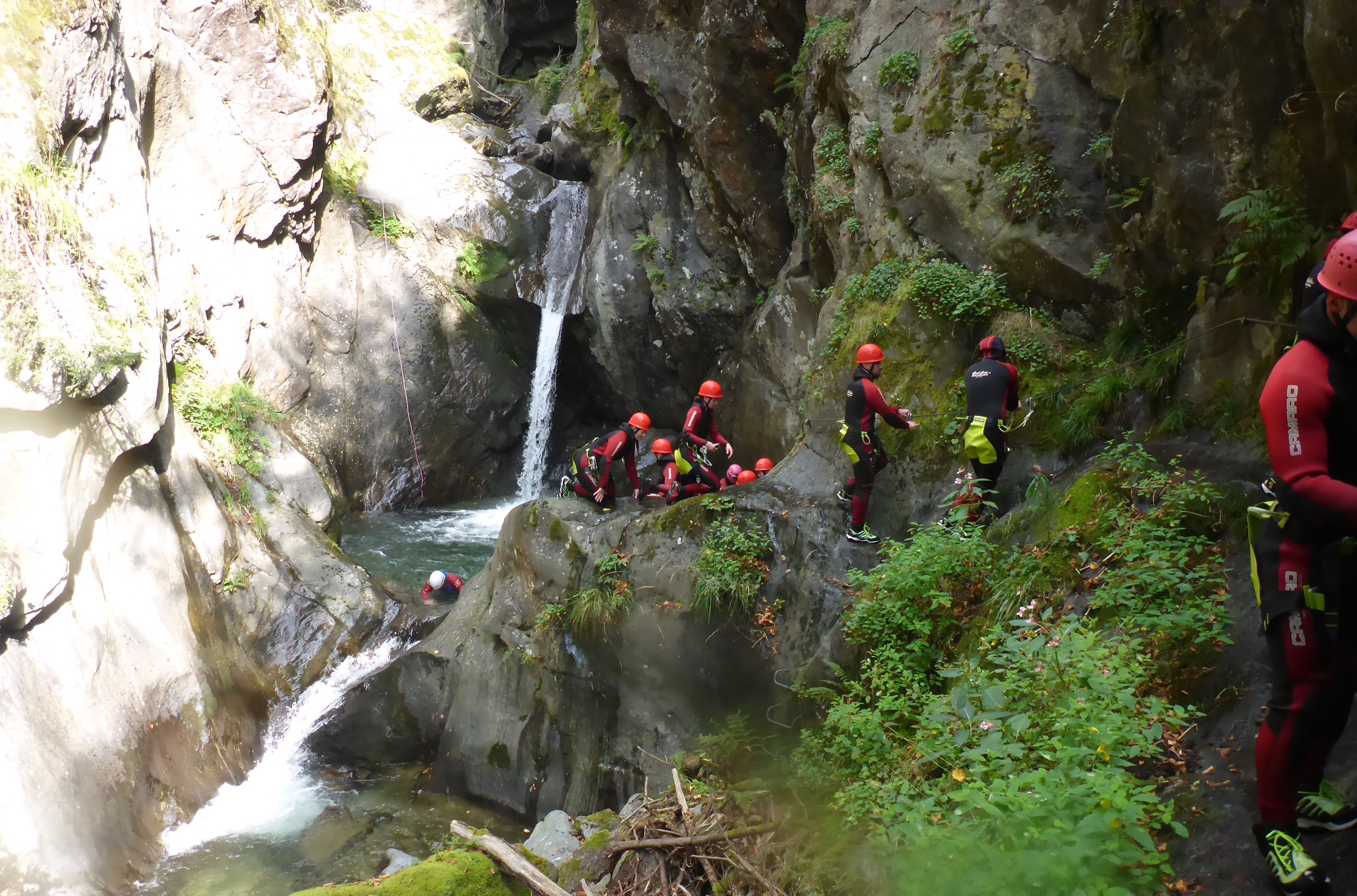
The U.S. Snowboardcross Team took to the mountains of Austria for their annual team cohesion camp or “Rad Camp” from Sept 16-30. Rad Camp is a series of cross-training activities that lets the riders test their skills, develop a strong team culture, as well as have a ton of fun.
“To be competitive in snowboarding, an athlete has to be able to spend a lot of time outside of their comfort zone," said U.S. Snowboardcross Team Head Coach Peter Foley. “I like to find activities that the athletes might not be as familiar with so that they build up more experience facing uncomfortable situations and finding success in those areas. I feel like this prepares them for when it comes time to face the competitive pressures and straight-up gnarliness of doing what they do at the highest level of their sport.”
U.S. Snowboardcross Pro Team member Hagen Kearney shared the importance of being in the right headspace before strapping into his board.
“Rad Camp was awesome,” said Hagen. “I feel like whenever we do action sport related activities together and get out of our comfort zones, it helps us be in a better mental state going into training on snow. “
In addition to the mental aspect, Peter feels strongly about the physical training benefits related to off-snow activities, especially as it relates to the other gravity-driven sports. This time around the team took on mountain biking, cable park wakeboarding, canyoneering, and hiking.
“We did a bunch of mountain biking, which we feel is super valuable as another training aid,” said Peter. “For the athletes to be negotiating varied terrain, bank turns, jumps, doubles, etc. at speed is a huge benefit. Given the amount of time they can spend in an actual boardercross course during a year is very limited, it’s especially crucial we experience these elements as much as possible. The team also engaged in various activities including a really cool day of hiking in some high Austrian peaks, as well as spent an amazing day canyoneering,”
One new component of Rad Camp this year was the cross-team collaboration that took place at Area 47, the largest outdoor adventure park in Austria located in Ötztal-Bahnhof. Riders across the snowboardcross and the slopestyle teams tackled the cable park, where professional wakeboarder and U.S. Snowboard Rookie Team member Fynn-Bullock Womble put on a clinic.
“We had a super fun day where we teamed up with the slopestyle crew for a session of wakeboarding in a cable park,” said Peter. “It was really cool for the two groups to session it together. Fynn Bullock-Womble is insanely good, so it was rad for everyone to get to ride with him.”
U.S. Snowboard Slopestyle Pro Team member Dusty Henricksen has fully enjoyed getting a taste of Rad Camp and infusing cross-training into his regiment.
“It's been a blast hanging out with the team out here in Austria,” said Dusty. “We’ve been playing games of S-K-A-T-E in the parking lot to pass some time. We've been able to snowboard Hintertux, hit the Banger Park airbags, and go to Area 47, which has every outdoor activity you could imagine. We even had an insane day at the cable park with the snowboardcross team where everyone was ripping.”
Following Rad Camp, Peter and the team settled into Saas-Fee, Switzerland, for a long training block. They are aiming for 16 days of on-course training. Stay tuned for more news from Saas-Fee camp across U.S. Ski & Snowboard’s social media channels.
FOLLOW
Facebook
@uskiandsnowboard
Instagram
@ussnowboardteam
Watch Maggie Voisin’s First-Ever Film, Swiftcurrent
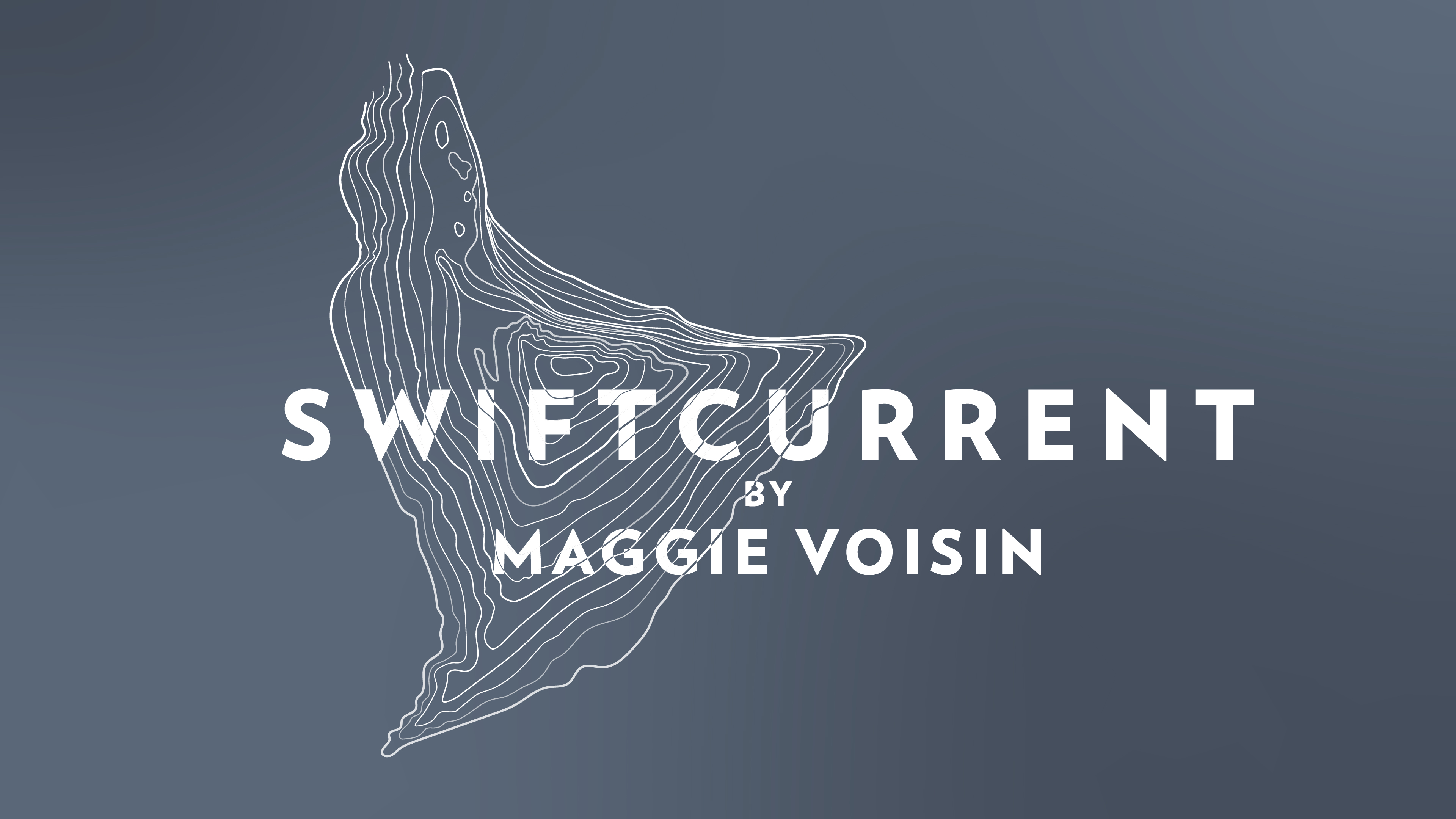
Two-time Olympian, X Games gold medalist, and now film producer Maggie Voisin has premiered her first-ever ski film Swiftcurrent. Maggie teamed up with Good Company’s Kyle Decker to piece together competition, backcountry, and lifestyle content making for one of the most well-rounded ski segments to hit the internet.
;
Maggie started filming in February of 2019 with a sled trip to Cooke City, Montana. Later that winter, Maggie confronted the harsh reality of sustaining a torn ACL and was forced to shut down production due to surgery. In classic Maggie fashion, she decided to mount her comeback at the biggest event of the year, taking home the bronze at X Games Aspen. Following a strong debut in Aspen, Maggie immediately collected podiums at the Land Rover U.S. Grand Prix, Dew Tour as well as an X Games Norway big air silver and slopestyle gold.
It is no surprise that Maggie set her sights on pushing women’s freeski progression in the world of film, as she has been pushing the boundaries of competitive skiing since she joined the U.S. Freeski Team at the age of 15.
Learn more about Swiftcurrent through an exclusive interview with Maggie below:
Q: How long have you envisioned this project in your mind?
A: When I was a young girl, I was always searching the internet on my parent’s computer looking for all kinds of ski edits. Especially films and short clips that focused on female skiers. For me, it didn’t matter the type of mountain features or the style of skiing, I would watch everything from terrain park to backcountry. The dedication and passion that ski edits instilled in me were a major inspiration to pursue a career as a professional skier.
My career as a professional skier began when I was fifteen years old and the dream of having my own video project and ski edit goes back even further. Fast-forward to the last two years, my schedule and opportunities from my sponsors all came together to finally bring that dream to life.
From a visual and storytelling aspect, I never really knew what a ski edit would look like for me. With the majority of my time spent as a female contest skier, the idea of combining my park skiing with backcountry skiing seemed like a really unique concept. I’m not claiming to be the first to incorporate the two different worlds of skiing, but it is rare nowadays to see female competition skiers break from their incredibly busy contest schedules to make a film. Especially a film that incorporates backcountry skiing.
Q: What were your goals for the film?
A: My one main goal was to make an edit that I could be truly proud of. It was never about creating the most insane female ski edit, doing the craziest trick, or skiing the gnarliest line. I wanted this film to be about pushing myself out of my usual comfort zone [park skiing] in a whole different way than I am used to. I feel that is exactly what I achieved.
I think people will be surprised to see that most of the skiing is not done sliding rails and hitting massive jumps. That aspect of my skiing is only one piece of what I want to do in my career. I grew up skiing in the mountains of Montana with my father, Truby Voisin. The mountains and backcountry are elements of my skiing that I am truly passionate about and I want to share with other people.
Also, a progression of my park tricks in the backcountry brings another female competitive skier into a male-dominated field of ski film making. Overall, this film project has sincerely opened my eyes to the world of backcountry skiing. I have so much more to learn in the backcountry and I’m excited to keep challenging myself in new ways and finding out what the future has in store for me.
Q: Is this just the beginning of your film career? What’s next?
A: I have had the opportunity to be a part of a couple of other ski edits over the years, but this is my first solo film project and it is definitely just the beginning. The majority of my time and focus is on being a contest skier. That being said, I believe that it is possible to be just as successful at competitive skiing while working on other film projects. With me having an already solid and successful career in the contest scene, I want to start diversifying my skiing in fun and new challenging ways. Now that I have opened my eyes to the film world, ideas are already coming to mind on what the next edit will look like.
At the top of the list is skiing bigger and more technical lines in the Alaskan mountains and taking more of my park tricks to the backcountry. As I have said before, I am humbled by the dynamic and ever-changing challenges of backcountry skiing. With so much to learn, I feel like my younger self again learning and evolving in a whole new way. I have a full heart for what’s next.
However, in the next couple of years, I will be putting a significant amount of time and focus into the Beijing 2022 Winter Olympic Games. Making the United States Olympic Team is an important goal of mine and I will do everything possible to be at the top of my game when that time rolls around.
Q: When you saw the final version of Swiftcurrent for the first time, what was the first thought that came to mind?
A: That moment is hard to put into words. Being a part of the whole film process was super exciting and showed me how much work it takes to make all of the little things come together. Unfortunately, while we were dialing in on some of the finishing touches, I found out that my left knee required surgery again after a training accident. So, when the finished product was finally ready to watch from start to finish, it was a bit of an emotional time.
For those who don’t know, I received my second ACL surgery on my left knee in April of 2019 and worked extremely hard to get back in time for the 2020 contest season. The contest season was above and beyond what I imagined for myself. With such a quick turn around from the ACL surgery, I had the most successful contest season of my entire career and finished filming for Swiftcurrent.
As it goes and due to the ski season being cut short by the pandemic, I was initially worried that the edit wouldn’t be finished at all. We originally still had a couple of park shoots planned and another backcountry trip that we were working on for the end of the season. The film would probably have been a bit different if I was able to finish those filming trips. With that all being said, I'm so grateful for what we were able to get done and so proud of how the final product turned out.
Q: What do you want people to take out of this film?
A: What an amazing question and I honestly haven’t really thought about it up until now. I say this because it is something that I really wanted to do for myself. Thinking on it, I more than anything just hope that the film is fun and inspirational for everyone who gets to watch. Similar to the days when I was a young girl watching ski edits and dreaming of being a professional skier.
In the end, it's a great privilege that as skiers and athletes we get to create content that we are passionate about. It’s gratifying to think that something I’ve created will hopefully spark positive emotions and inspiration into whoever stumbles upon my project.
Q: What was your favorite moment when filming this project?
A: It’s so difficult to pick one specific moment, but my favorite memories were made in the backcountry. One moment that sticks out was the day I did the double backflip. We left Park City, Utah, that same day and drove straight to the backcountry. Due to snowy weather, we had originally planned on building a jump and then hitting it the next day once the weather cleared. As we finished building the jump, the snow slowed down and we just decided to give it a go.
Before that day, I had never done a straight-up double backflip, even on a trampoline, but the idea of doing the trick was in the back of my head leading up to the trip. I didn’t even know if I was going to try it, but after I did one single backflip off the jump, I knew I could do it. It was a bit of a battle and it took me six tries to land the double backflip. I was determined to stick it to my feet and the reward of landing it was so thrilling. We had a solid crew at the bottom of the jump who kept the stoke going and that session really set the tone for the rest of the trip.
Q: Is there anyone you would like to thank?
A: First and foremost, I want to thank my agent Tom Yaps. He is the reason that this whole project came together. Not only would I have been unable to do this without him logistically, but he’s been one of my biggest supporters throughout my entire career.
Next, I want to thank Kyle Decker, the man behind the lens! I can’t say enough great things about Kyle. It was incredible having a filmer who was equally as excited as I was about the entire project. Kyle was so patient with me every day, even when I would constantly get my snowmobile stuck! Most importantly, he was my hype man through it all and he made me feel so confident, even when I was so out of my element.
I couldn’t think of a better team to make this happen and I can’t wait for us to work together again. I was also lucky enough to join Tom Wallisch on a backcountry ski trip to Utah. He has always been a role model and I would not have been able to get done what I did without him on that trip. I just want to keep personally thanking everyone, but you all know who you are and I am so grateful.
Last but not least I want to thank my sponsors because without them I wouldn’t be living the life I get to live. Spyder, Monster Energy, and K2 Skis thank you so much for supporting this project specifically and making my dream a reality. I would also like to thank Land Rover for their ongoing support.
Jeff Shiffrin Athlete Resiliency Fund Launches; Helps Fuel Athletes’ Olympic Dreams
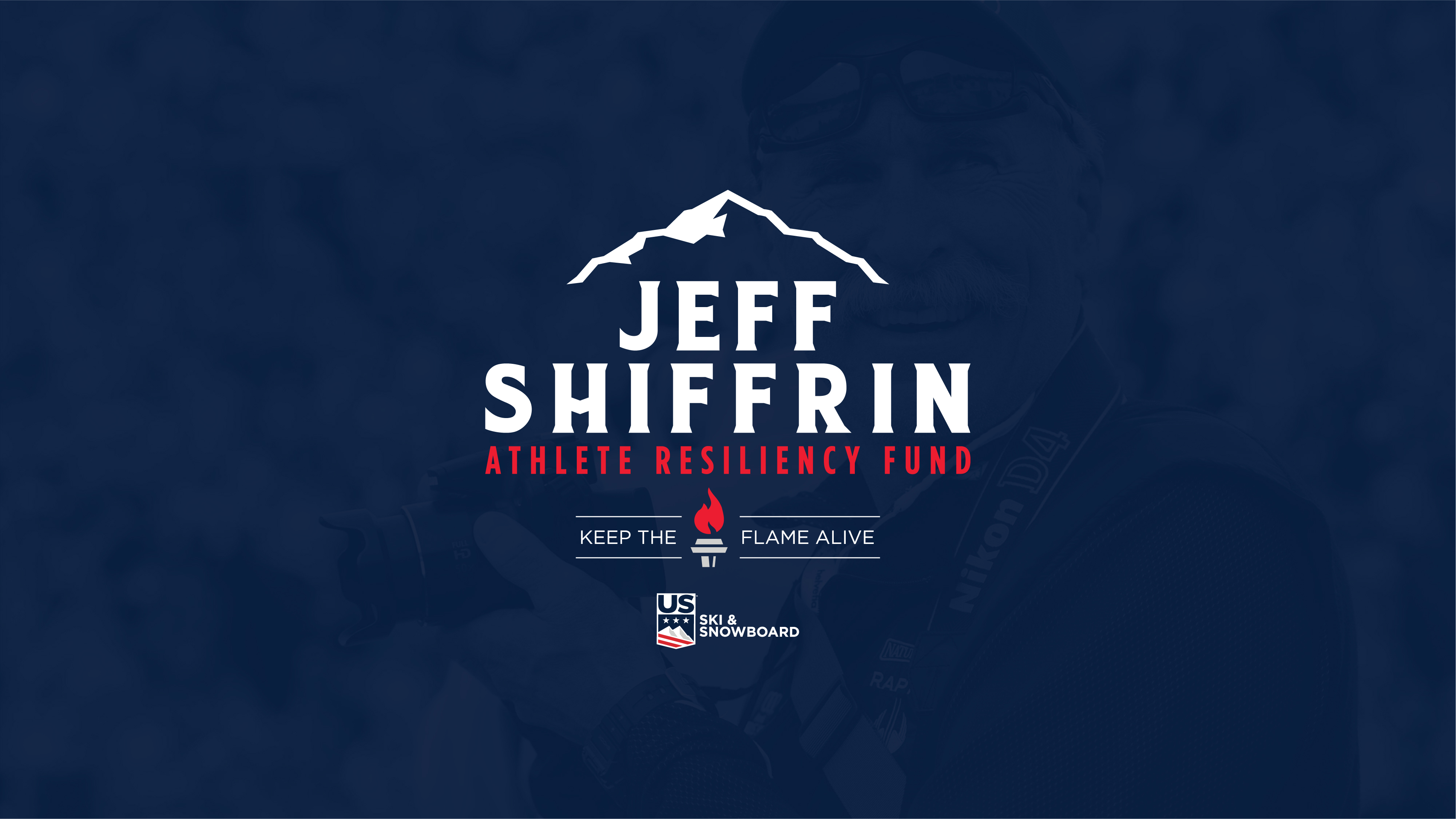
On February 2, 2020, two-time Olympic champion Mikaela Shiffrin’s world stopped turning when her dear father, Jeff Shiffrin, unexpectedly and tragically passed away. Shortly thereafter, the entire world came to a halt as COVID-19 swept the globe.
With challenges, come opportunities.
The name Mikaela Shiffrin has become a household name across America and around the world over the last several years. At just 25 years old, the skiing phenomenon is already a two-time Olympic Champion, five-time World Champion, and a 66-time World Cup victor. She was featured on the March 2020 cover of Sports Illustrated, which named her the world’s most dominant athlete. Anyone who has seen Mikaela ski knows they are watching history in the making, and it’s thrilling. The powerhouse that is Mikaela Shiffrin—the speed, the precision, the focus, the resiliency—reflects the values and discipline instilled in her by her parents from a very young age. In 2020, it is the gift of resiliency that has taken center stage.
Following a tragic accident at the family home, Dr. Jeffrey Scott Shiffrin—known to his family and friends as Jeff—passed away with his family by his side. Like so many fathers, Jeff was the foundation of the family and his absence is felt deeply by them every day. As Mikaela said, he was “our mountains, our ocean, our sunrise, our heart, our soul, our everything. He taught us so many valuable lessons...but above everything else, he taught us the golden rule: be nice, think first.”
He has also left a strong legacy behind in his two children, Mikaela and Taylor, and in the many lives he touched throughout his journey as a doctor, husband, father, friend, and mentor. Raised in Dover, New Jersey, Jeff often spent weekends with his family at Stratton or Sugarbush in southern Vermont. At age 13, he joined the race team at Great Gorge Ski Resort (now Mountain Creek). He later raced on the Dartmouth Ski Team and remained active in the sport all his life, oftentimes seen with his camera around his neck on the side of the mountain, or in the finish area.
In March, Mikaela returned to Europe with a plan to get back in the start gate. However, COVID-19 caused an abrupt end to the season for Mikaela and her U.S. Ski & Snowboard teammates. In response to the COVID-19 crisis and setbacks it has created for U.S. Ski & Snowboard athletes across all sports, a group of generous donors (six families) have stepped up and offered to match, dollar for dollar, every single contribution raised up to $1.5 million, creating the “Jeff Shiffrin Athlete Resiliency Fund.”
“To me, resiliency is the ability to experience something really difficult—hardship, pain, struggle—to experience that, and to get to the other side of it, holding on to some form of strength or purpose,” said Mikaela. “And it doesn’t mean you were the same person that you were before…but you keep that strength, you keep that toughness or that determination you had before. In a sense, it’s just holding on to the fire that you had, that kept you going…that kept you motivated and moving forward. So, really, resiliency is just not giving up.”
In creating the Jeff Shiffrin Athlete Resiliency Fund, the Shiffrin family, coupled with these generous donors, wanted to honor both Jeff’s legacy, as well as contribute to the ongoing pursuit of excellence for all athletes across all sports. Better days are still ahead, and the thrill and challenge of athletes’ Olympic dreams are worth fighting for.
In honor of Jeff’s life and legacy, U.S. Ski & Snowboard is proud to announce the launch of the Jeff Shiffrin Athlete Resiliency Fund campaign. The Shiffrin family believes that great goals can be achieved through hard work, discipline, and resiliency.
The goal of the Jeff Shiffrin Athlete Resiliency Fund is to keep athletes’ skis and boards on the snow, despite potential storms ahead. Funds raised will assist in U.S. Ski & Snowboard’s ability to support all athletes and teams during these uncertain times. The Jeff Shiffrin Athlete Resiliency Fund will sustain coaching, training camps, and competition expenses now, and hopefully, help bridge the gap through the end of the 2022 fiscal year.
“We thank Mikaela, her mother Eileen, and brother Taylor, for their generous and incredible time and energy in working with our Foundation in honoring Jeff’s legacy,” stressed Tiger Shaw, President and CEO of U.S. Ski & Snowboard. “We are deeply grateful to the six families that have committed more than $1.5 million to launch the Jeff Shiffrin Athlete Resiliency Fund: Phill & Liz Gross, Paul & Wendy Raether, Eric & Sara Resnick, Andy & Linda McLane, Steven & Mary Ann Read, and Steve & Diana Strandberg.”
“Donor contributions will support athletes across the U.S. alpine, freestyle, freeski, snowboard, and cross country teams as we continue our journey to the 2022 Beijing Olympic Winter Games and address ongoing challenges related to the COVID-19 pandemic. The Jeff Shiffrin Athlete Resiliency Fund will allow us to be nimble in being prepared for unexpected expenses in the run up to and during the Olympic Games. ”
Mikaela rallied a crew of alumni athletes and current athletes who embody the definition of “resiliency,” including Olympic champions Jonny Mosely, Kikkan Randall, Jessie Diggins as well as three-time World Champion Jeremy Bloom and three-time World Cup winner and Land Rover U.S. Alpine Ski Team downhiller Steven Nyman, to share their unique stories of resilience. The 185 alpine, cross country, freestyle, freeski and snowboard athletes will be encouraged to share their stories of resilience, and those who have inspired them, in U.S. Ski & Snowboard’s social media challenge to #KeepTheFlameAlive.
Prior to this public launch, U.S. Ski & Snowboard raised more than $800,000 in contributions towards the $1.5 million match goal. For more information about the Jeff Shiffrin Athlete Resiliency Fund and to donate, visit keeptheflamealive.org.
DONATE NOW
The Woman Behind the Numbers: How Lily Koffman Helps Mold Better Athletes Through Science
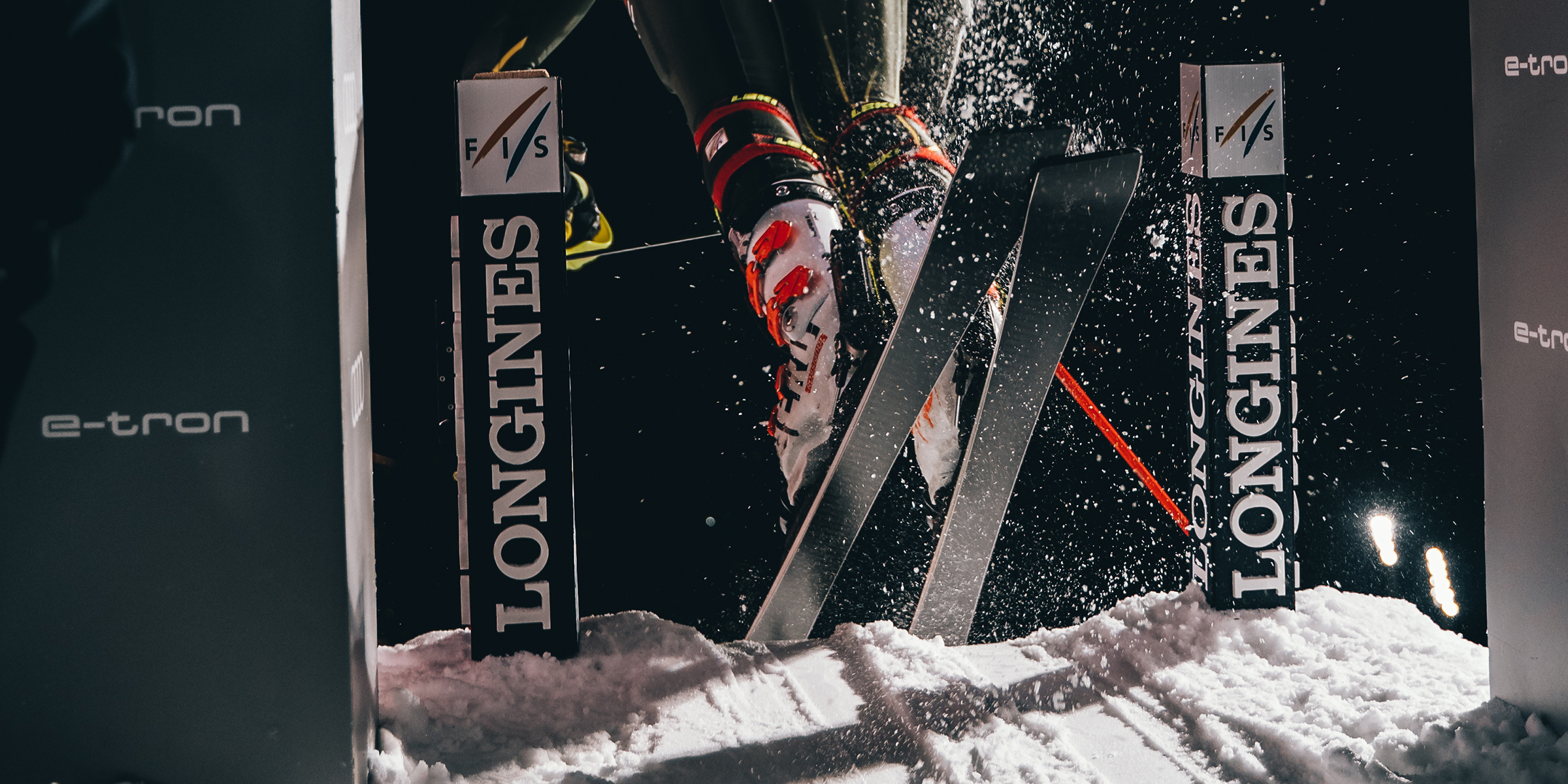
U.S. Ski & Snowboard athletes perform quite literally on the edge—on their skis and their boards—gaining an edge over the competition is the difference between earning a podium or not, and in one medal versus another. As skiing and snowboarding has evolved over time, so too has U.S. Ski & Snowboard’s understanding of what makes an athlete successful. When the difference between success and failure is on the edge, finding a competitive advantage becomes paramount.
Enter Lily Koffman. In 2019 during her senior year of undergrad, Lily read an article in Faster Skier describing U.S. Ski & Snowboard Performance Data Manager Gus Kaeding’s work using data to better inform Team criteria, specifically for the cross country team. As an undergraduate at Harvard University studying statistics on the hunt for a thesis project, and a member of the Harvard Cross Country Ski Team, Lily thought to herself: “That’s cool. I wonder if he needs any help.” Her outreach to Gus led to a summer fellowship, funded by the American Birkebeiner Ski Foundation and Women in Sports Tech, which just wrapped its second year. Although Lily didn’t find her senior thesis, she is playing an instrumental role in helping U.S. Ski & Snowboard mold better athletes through science.
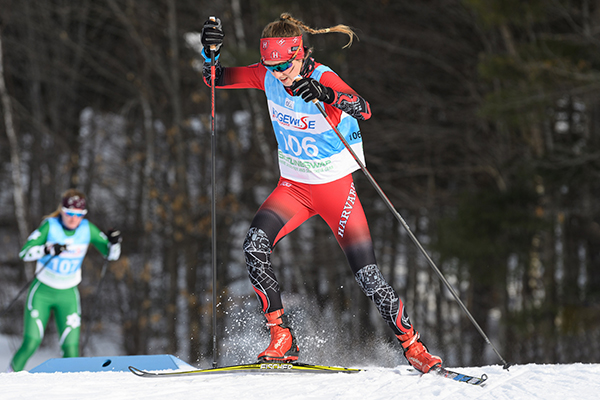
Athletes and coaches are no strangers to collecting and analyzing data, including: daily nutrition, sleep habits, levels of fatigue and stress, repetitions and loads in the gym, number of jumps, number of training runs, snow conditions, etc. But how do you turn those numbers and logs into useful information and calls to action? Think of Lily and Gus as the codebreakers; these two analyze and interpret data across all sport disciplines for meaningful insights.
“A lot of the information we have previously relied on [for developing athletes] is anecdotal,” explained Gus. “I think especially in skiing and snowboarding we have lots of opportunities to make decisions going forward based on fact, not just something your coach told you that his or her coach told them before that.”
Gus started with U.S. Ski & Snowboard three years ago and since then has streamlined how athlete data is collected, managed and analyzed. “Now we have enough data that we can have these dedicated projects and attract talented people like Lily to help us. We have the problem, here’s the data, now solve this.”
Lily focused on three major projects for U.S. Ski & Snowboard including analyzing Mikaela Shiffrin’s data, the entire Alpine development system, and ACL injuries across sport. And because she’s partially funded by the American Birkebeiner Ski Foundation (Birkie), she investigated female participation in the Birkie event.
The American Birkebeiner is the largest, and one of the longest, cross country ski races in North America. It sees about 20% female participation annually and the organization employed Lily to make recommendations, based on the data, of what they could do to attract and retain more women. Through her research, Lily found that this problem isn't unique to the Birkie. Lily was surprised to learn that the Norwegian Birkebeiner also has about 20% female participation as well.
“Skiing is super popular in Norway. [So these findings were] somewhat reassuring. It’s not specific to the American Birkie, but a worldwide problem in skiing. Conversely, world marathon running participation is about 40% female. So there’s lessons to be learned, what did running to do increase participation and how can we apply this information to skiing?”
Lily made several recommendations based on running’s successes. “A lot of growth in women’s distance running is attributed to social and charity running groups. Skiing can benefit from a similar focus on community and charity. It’s also important to make marathon skiing more accessible. On snow training every day isn’t essential to being able to ski the Birkie. There’s this perception of this really competitive culture. If you’ve never done a ski marathon it’s hard to show up and have confidence that you can do it too, especially if you don't have a skiing background.”
Lily recommended training plans and equipment guides, similar to what’s prevalent in the marathon world, as well as identifying community ambassadors who can encourage women to try skiing the Birkie, and to come back year after year.
As a woman in a largely male-dominated field, Lily’s perspective as a woman can help bring women-specific issues to the forefront of sport science. A review of 1,382 exercise medicine studies published between 2011 and 2013 found that females made up 39 percent of total study participants. Among 188 studies published in two academic journals in early 2015, females made up 42 percent of study subjects. Among studies in sport science, females accounted for only three percent of participants.
“I think it's one of the things that I am personally interested in,” Lily said. “It’s important to grow the presence of women in data roles so [more people start] paying attention to the gender angle. I’m trying to do my part to make [those stats mentioned] more 50% [across the board].”
Lily’s first project with U.S. Ski & Snowboard was to overlay two-time Olympic champion, five-time World Champion and winningest slalom skier of all-time, Mikaela Shiffrin’s training and wellness data with her race data to discover what the most important variables were in the week before a race. It was an exciting endeavor, but not as straightforward due to Mikaela’s overall success, “It’s a hard thing to look at, to measure performance, especially with someone like Mikaela,” Lily explained. “The problem is, what is success? [Mikaela] might win, and she wins often, but it might not be a ‘great’ race.”
“Because Mikaela wins so often, having a win doesn’t really tell you how good of a race it was itself,” added Gus. Lily had to come up with a new metric that showed which races were actually Mikaela’s best performances. Lily presented this information to Mikaela’s team earlier this summer, with the intention of repeating the process this season, to determine successes and new learnings.
From there, Lily took on the daunting task of analyzing the entire alpine development system from youth to National Team athletes, as well as NCAA skiers. “This was the first comprehensive analysis that lays out the entire alpine environment from youth to elite skier,” said Gus. “It was a pretty hard analysis. We’re fortunate to have Lily for this because I’m pretty confident that she is one of few in the entire ski world who has the skill to do such a task; it’s very complex. [We now have a] historical analysis from everything that’s happened (how skiers move through the system compared to other nations), which can help shape the direction going forward.”
“Going into a project I have no goal of what I want to see,” Lily explained. “[For the alpine project] the question was ‘What does the career path of different skiers in the U.S. look like?’ The first step is to make a lot of visualizations. Then something might grab my attention, so I focus on that aspect.”
Although her fellowship is wrapped for the summer, Lily will continue to work on the ACL project as she pursues her master’s degree in biostatistics at Harvard this year. This is of particular interest to U.S. Ski & Snowboard, as being able to actively prevent season and career-ending injuries could be a serious game changer.
“Our ACL data is among the biggest data sets of ACL injury that I have ever seen,” explained Gus. “One thing that we have that no other ACL data sets have is that we know a lot of what athletes are doing before they were injured.” Other ACL data sets mostly come from a medical perspective, the starting point for this data is once the person is injured, not what happened beforehand. “For [our athletes] we know their strength numbers in the gym, what kind of snow they were skiing on, how many snow days in a row they had… we know if they had traveled the week prior, if there was another existing injury beforehand. There’s lots of things to look at.”
“[I want to see] if I can identify any trends in who is getting injured, what they were doing when they got injured and return to snow timeline protocols,” said Lily.
“No data set is perfect,” said Gus. “But we have the whole lifecycle and as much data as you could hope for given the lack of frequency we have for this injury. Our goal is to continue [that trend] of lack of frequency [in ACL injuries].”
Data analysis is increasingly a critical element in high performance innovation. Using data to first identify problems and then make decisions based on proven trends means working smarter. Having talented, passionate individuals working behind the scenes making sense of what’s actually happening in the field is crucial in empowering athletes to reach their full potential.
“We’re fortunate because we have cool things to work on,” said Gus. “That’s attractive for a young person in the field of data. We should be taking advantage of these young people who think differently [than how I or someone else was taught].”
U.S. Ski & Snowboard is taking applications for its female data fellowship program for 2021. If you’re a female in sports tech interested in opportunities with U.S. Ski & Snowboard, please contact Gus Kaeding at gus.kaeding@usskiandsnowboard.org.
About the American Birkebeiner® Ski Foundation
Located in Hayward, Wisconsin, the American Birkebeiner Ski Foundation (ABSF), a 501(c)(3) organization, is known for its signature American Birkebeiner “Birkie” Ski Marathon held each February. The ABSF creates inspiring events to assist all ages and abilities in living a healthy, active lifestyle. Learn more at www.birkie.com.
About Women in Sports Tech, Inc.
WiST is a non-profit organization driving growth opportunities for women in sports tech and innovation, from interns to executive leadership roles, while providing a pathway for highly motivated college students to discover and explore opportunities within the field. Corporate support includes Nike, IBM Sports, the NBA, Spartan Race, and Catapult Sports. To learn more about how WiST is working to #ChangeTheRatio for women, go to womeninsportstech.org.
Gardner Returns To Snow at Timberline
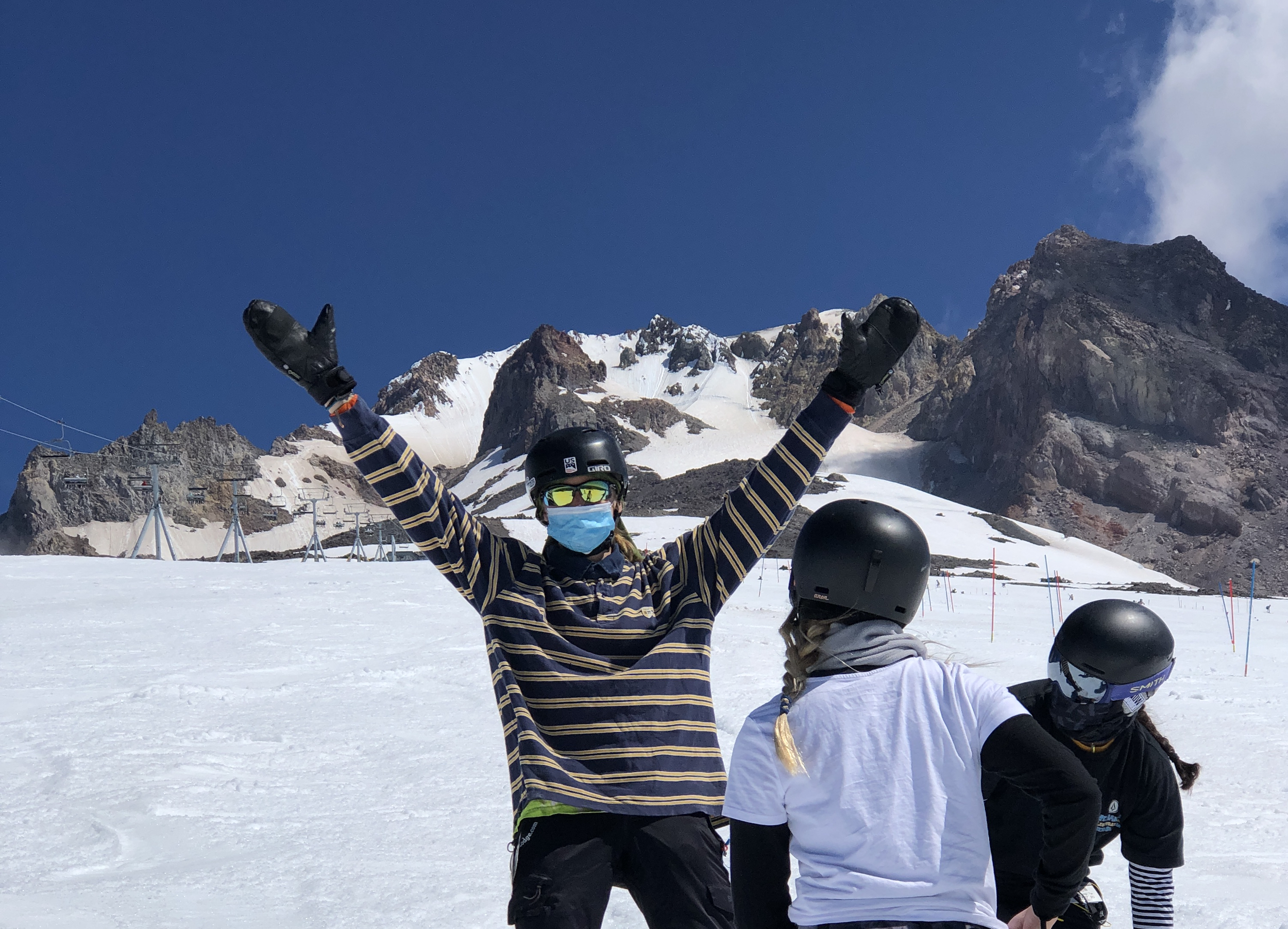
The U.S. Snowboard and Freeski Slopestyle Teams returned to snow for their first on-snow camp of the summer at Official Training Site Timberline Resort & Ski Area in Mt. Hood, Ore. July 20-July 30.
The highlight of the camp was U.S. Snowboard Slopestyle Rookie Team member Addie Gardner strapping back up for the first time since sustaining a significant back and pelvis injury at the 2019 Modena Ski Pass Big Air World Cup. Addie was greeted with open arms by her teammates.
“She has had a tough road ahead of her and worked hard to get back on snow since her injury in October,” said Slopestyle and Big Air Pro Team Head Coach Mike Ramirez. “It was a special moment being there for her return to snow with some of her best friends and teammates. For her second run, we Facetimed her parents so they could be part of the moment as well."
Addie felt she had a successful camp and was grateful to be back doing what she loved with her favorite crew.
“I don’t think It could have gone any better,” said Addie. “Having the support and hype from my teammates from the start of the day to the finish was amazing. I wouldn’t have wanted to share my first time back on snow with anyone else. I am so thankful and it felt amazing! I was sore at the end of the day, but it was worth it.”
Addie was joined by fellow rookie team riders Courtney Rummel, Isabella Gomez, Liam Johnson, as well as pro riders Ty Schnorrbusch and 2020 FIS Big Air Crystal Globe Winner Chris Corning. MIke described Corning as, “a consummate pro who leads by example.”
Co-Slopestyle and Big Air Pro Team Head Coach Dave Reynolds expanded on Chris’s leadership role.
“It was a small group in the 'bubble' with mostly rookies and it was awesome for them to see just how Chris operates,” said Dave. He does all the right stuff and gets after it on the hill. He made an effort to take Liam (Johnson) under his wing a bit and make him feel welcome and comfortable with it being his first camp with the team.”
For the freeskiers, it was a similar story of getting reacclimated to snow and reuniting with friends and teammates. U.S. Freeski Slopestyle and Big Air National Development Team Coach Ryan Wyble shed some light on the dynamic at camp, which included U.S. Rookie Team members Marin Hamill, Rell Harwood, Jenna Riccomini, Bella Bacon, Richard Thomas, Troy Podmilsak, and Hunter Henderson.
“All of the new and returning athletes on my team knew each other before camp, but it was really a good experience to finally get everyone together in person and spend more time together,” said Ryan. “There were some great sessions on the mountain with both new and returning athletes pushing each other to do tricks, which was epic to see at the first camp. Off the hill, there was also a lot of time spent between new and returning athletes participating in the limited activities that were available to us.”
Although social media channels are flooded with fun and light-hearted content coming out of the glacier, it’s still very apparent that U.S. athletes are lucky to be back on snow amidst a global pandemic.
“It was a big undertaking to plan out this first camp back on snow, with lots of help and support from our medical staff,” said Ryan. “Just to get everyone to Timberline, on snow, and back home safely was a big accomplishment. After so much time living in our own little bubbles during this pandemic, it was really a great feeling to have the whole team together and to see the athletes push and feed off each other on the hill. I think we all shared a renewed appreciation for the sport we love. That environment was certainly missed over the last four months.”
The U.S. Snowboard and Freeski Teams will look to take their training to European glaciers this fall to continue their preparation for the 2020-21 competition season. They will first head back to Park City, Utah to U.S. Ski & Snowboard’s Center of Excellence as well as the Utah Olympic Park for airbag training.
Be sure to follow the U.S. Freeski and Snowboard Team on social media below.
FOLLOW
Instagram
@ussnowboardteam
@usfreeskiteam
Facebook
@usskiandsnowboard
Return to Competition
UPDATED AS OF 12-23-20
Please refer to the U.S. Ski & Snowboard COVID-19 Domestic Competitions Guidance located in the Resource Section.
Return to On Snow Training
UPDATED AS OF 8-7-20
